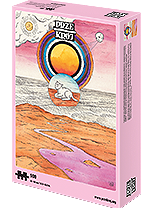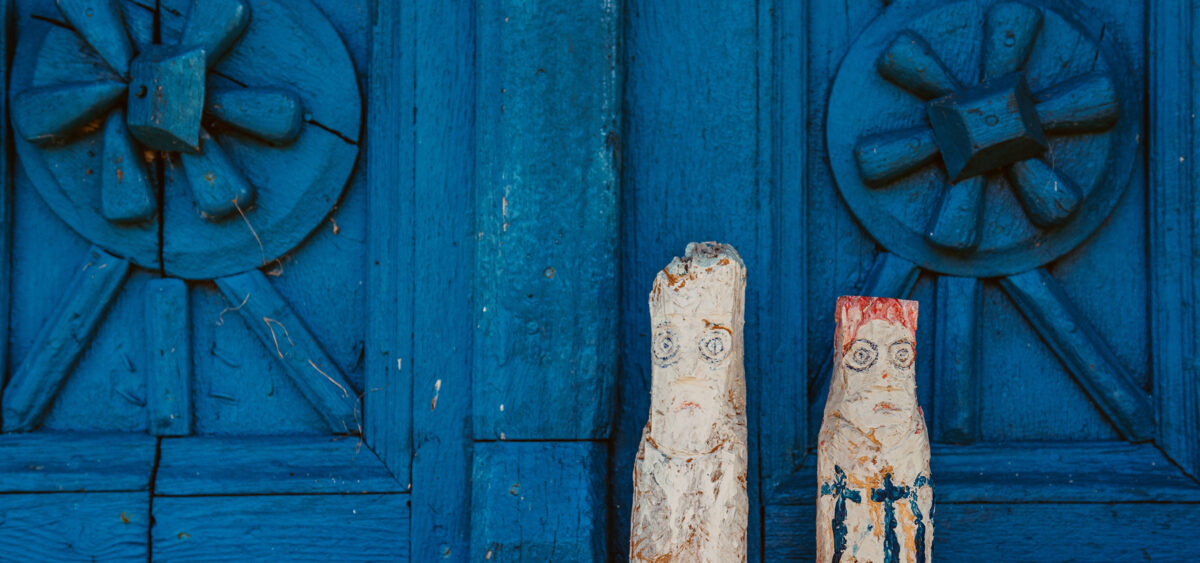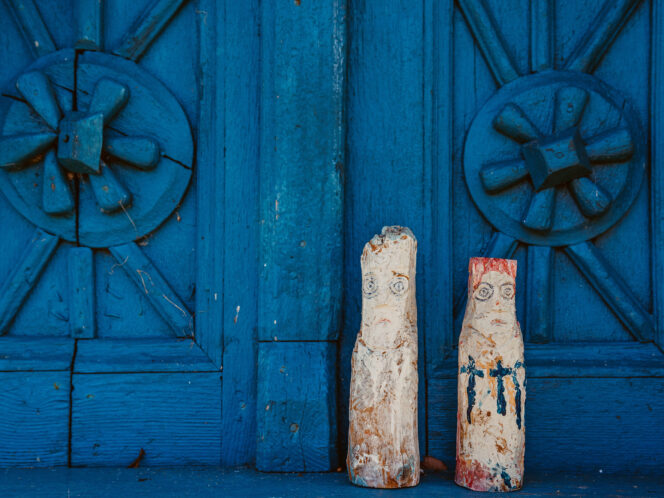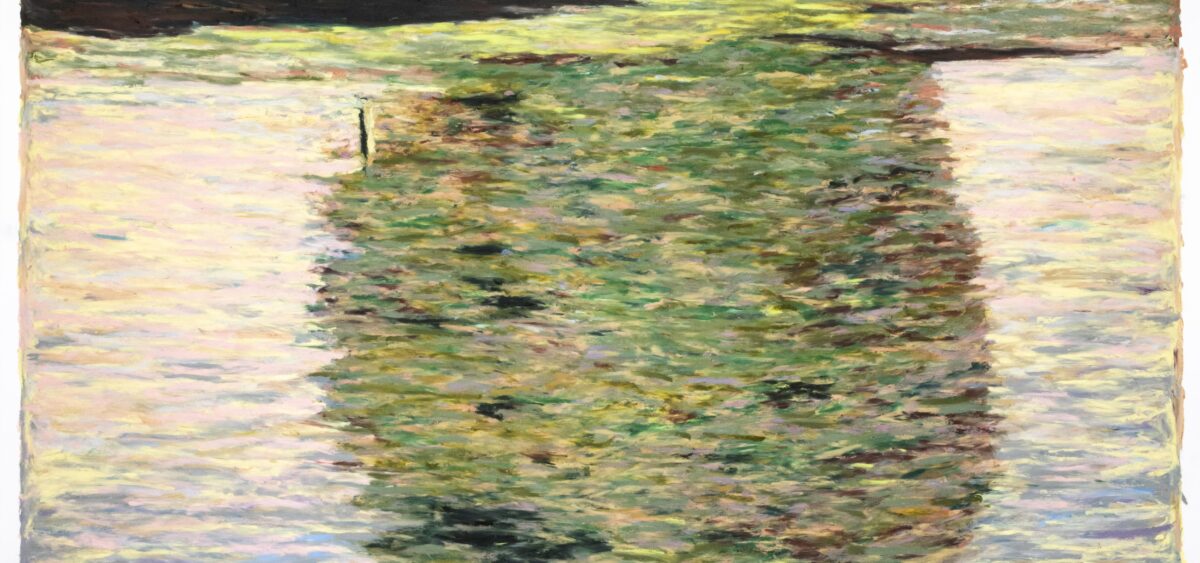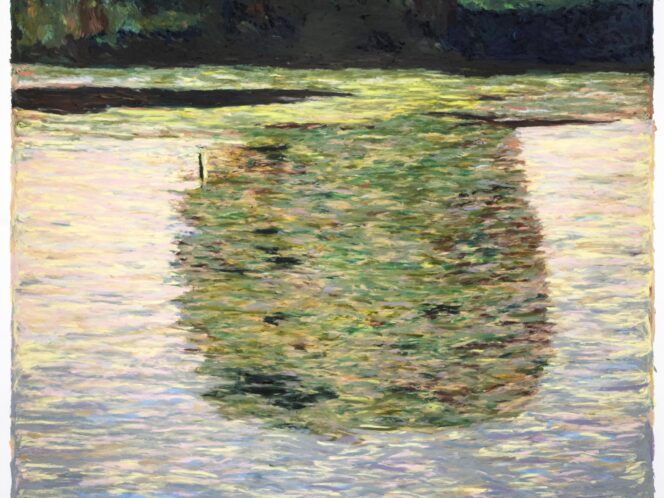
He was considered a weirdo in the village. He played strange melodies on his fiddle, slept in stables and sties, had a habit of blessing newborns. And he created gnoteks, wooden sculptures of angels and saints. His name was Karol Wójciak, but he was better known as Heródek.
It was the beginning of the 20th century. Little Karol was already eight years old. On this occasion, his father got him his first pair of long trousers and a jacket. He was a shepherd and spent whole days out in the meadows. Close to nature. The clothes – worn down, dark-coloured – seemed too sombre to him. So he cut some holes and stuck wild flowers in them. Now he could wear them. His father kicked him out of the house for this. Heródek became a hired hand and a cow shepherd on the farm of his richer relatives. After that, he changed employers twice, each time staying in the same place for over 10 years, but never in the main house. He had his corner in the stables, sty or some tool shed. Only two years before his death, his last employers took him indoors to their room, where he slept on a podwyrec (which was a drawer slid out from under a tall bed). Did they decide to do it because of Heródek’s old age? Or perhaps because of his sudden popularity after the 1967 write-up in “Przekrój”? Perhaps it was unbecoming for Piotr Skrzynecki or Marian Eile, who came all the way from Kraków for his sculptures, to see his living conditions?
Best understood by children
His speech was slurred. Most likely due to a speech impediment that he was born with. Or perhaps he was difficult to understand because he spoke a dialect coloured with pre-World War I influences and a sprinkling of words from Hungarian and Slovakian. He was born in 1892 in the region of Orava, in a village called Lipnica Wielka. At the time, Orava was part of the Austro-Hungarian Empire, and there were still strong Hungarian and Slovak influences in the region. In July 1920, part of the Orava and Spisz lands were incorporated into Poland on the basis of the Treaty of Trianon. However, Lipnica in its entirety became part of Poland only in 1924, after the exchange of territories with Czechoslovakia.
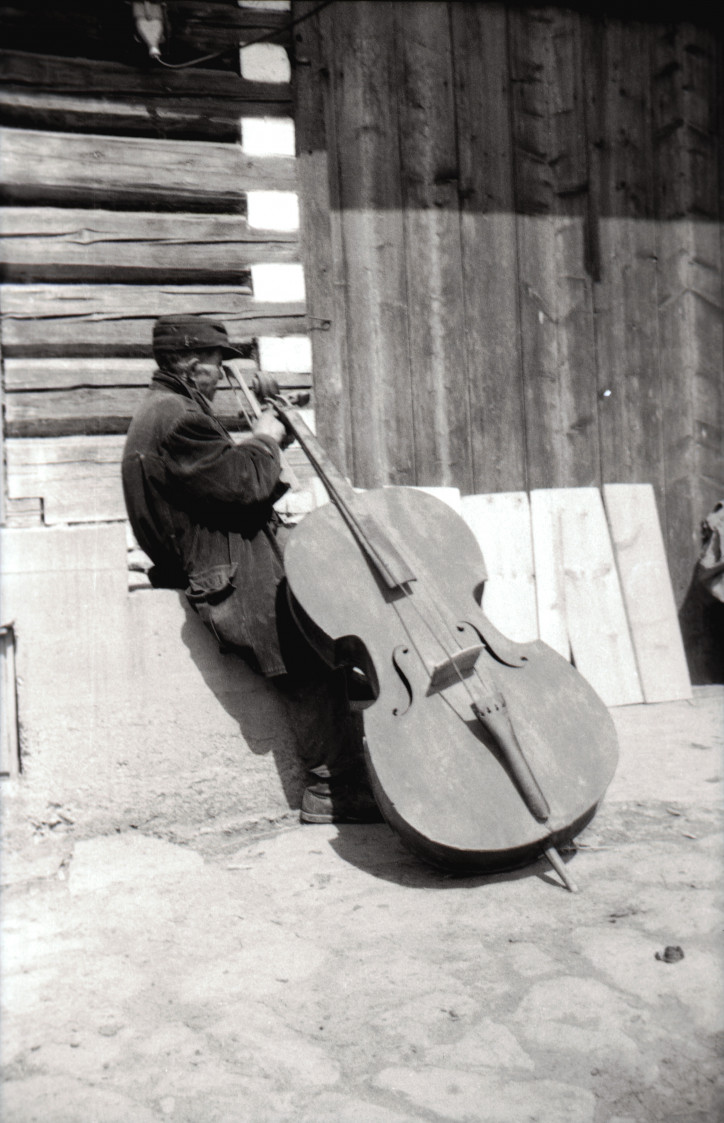
“Contact with the research subject is impeded by his slurry, old-age speech. He was best understood by children, so I used them as interpreters in my research,” Bożena Kłobuszowska reported in her 1972 article on Heródek. A psychologist by education, with a passion for ethnography, Kłobuszewska came several times to Lipnica at the end of the 1960s, and each time spent many hours with Heródek. She assumed that to understand his art, she had to first get to know his biography. She even ran some psychological tests, which revealed a slight mental slowness. But Heródek was already quite advanced in age, had gone through a serious thyroid disease and lived the hard life of a shepherd. And anyway, this slowness


